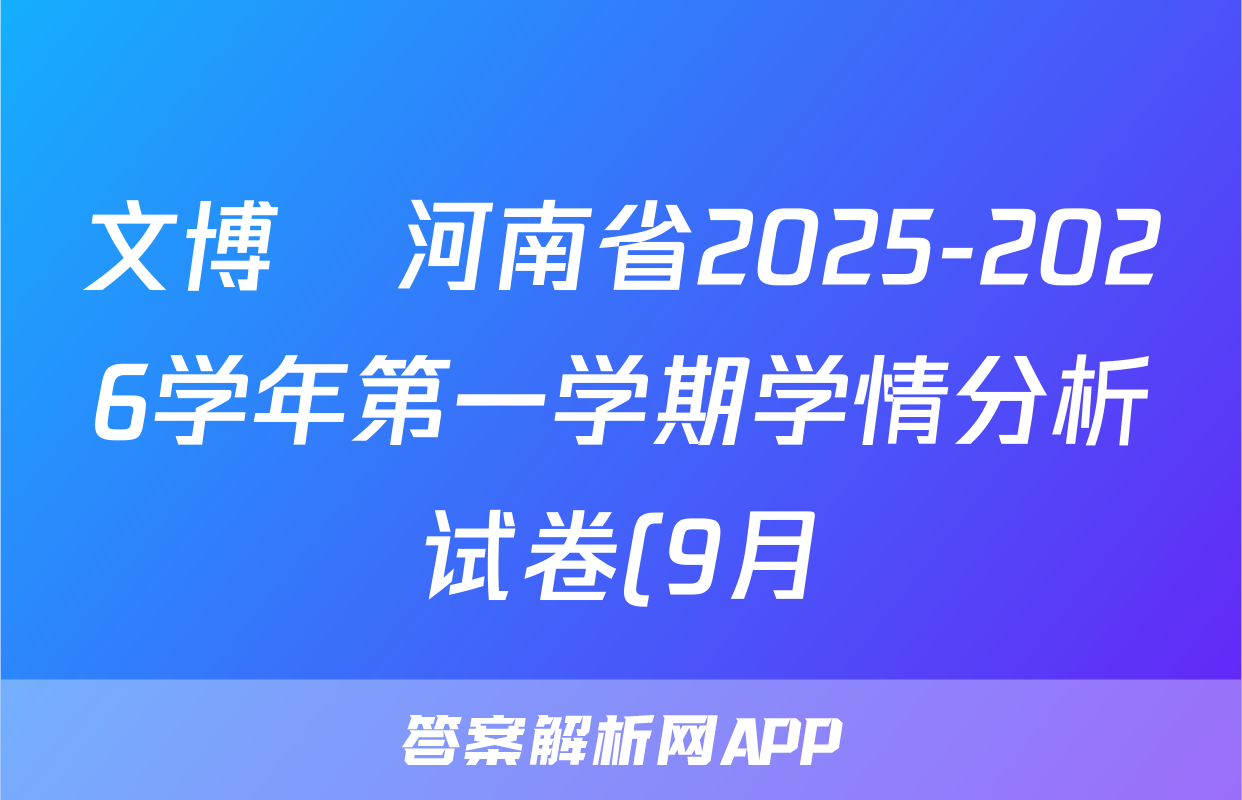文博•河南省2025-2026学年第一学期学情分析试卷(9月)八年级英语试题
文博•河南省2025-2026学年第一学期学情分析试卷(9月)八年级英语试题正在持续更新,目前2024届最新高考模拟示范卷答案网为大家整理了相关试题及答案,供大家查缺补漏,高效提升成绩。
八年级英语试题) 【7题详解】推理判断题。根据倒数第二段中“After the show,Ms. Sandra hugged her.“You didn't just dance tonight, Lila.You showed everyone what courage looks like."演出结束后,桑德拉女士拥抱了她。“Lila,你今晚不只是跳历,可推知,桑德拉女士这句话是为了表明Lila在经历困难挫折后勇敢地继续追求自已的梦想。故选B。CArtificial intelligence (Al) has emerged as a transformative force in healthcare, offering new ways to improvepatient outcomes and streamline medical processes. From diagnosing diseases to developing new drugs, AItechnologies are revolutionizing how healthcare is delivered worldwide. However, this rapid progress also bringssignificant challenges that must be addressed.One of the most promising applications of AI in healthcare is medical imaging analysis. Machine learningalgorithms can now identify patterns in X-rays, MRIs, and CT scans with accuracy comparable to trainedlung cancer in 94% of cases, outperforming human experts by 8 percentage points. This technology enables fasterdiagnosis, especially in regions where radiologists are scarce, allowing patients to receive timely treatment of dollars, with a high failure rate. By analyzing large datasets of molecular structures and biological interactions,AI models can predict how potential drugs will interact with the human body, reducing the need for expensivelaboratory experiments. For example, British pharmaceutical company Benevolent AI used AI to identify apotential treatment for amyotrophic lateral sclerosis (ALs) in just 12 months, a process that would typically takefive to seven years.Despite these advancements, several challenges hinder the widespread adoption of AI in healthcare. Dataprivacy is a major concern. Medical records contain sensitive personal information, and using this data to train Alsystems raises risks of breaches or misuse. In 2022, a major healthcare provider suffered a data leak that exposedthe medical records of over 1 million patients, many of which were being used to develop AI diagnostic tools.Another challenge is algorithmic bias. AI systems learn from historical data, which may reflect existinginequalities in healthcare. For instance, an AI tool designed to predict patient risk of heart disease was found tounderestimate the risk for female patients because the training data included more male patients. Such biases canlead to incorrect diagnoses or unequal access to treatment.Additionally, integrating AI into existing healthcare workflows remains difcult. Many hospitals use outdated第7页/共24页
【7题详解】推理判断题。根据倒数第二段中“After the show,Ms. Sandra hugged her.“You didn't just dance tonight, Lila.You showed everyone what courage looks like."演出结束后,桑德拉女士拥抱了她。“Lila,你今晚不只是跳历,可推知,桑德拉女士这句话是为了表明Lila在经历困难挫折后勇敢地继续追求自已的梦想。故选B。CArtificial intelligence (Al) has emerged as a transformative force in healthcare, offering new ways to improvepatient outcomes and streamline medical processes. From diagnosing diseases to developing new drugs, AItechnologies are revolutionizing how healthcare is delivered worldwide. However, this rapid progress also bringssignificant challenges that must be addressed.One of the most promising applications of AI in healthcare is medical imaging analysis. Machine learningalgorithms can now identify patterns in X-rays, MRIs, and CT scans with accuracy comparable to trainedlung cancer in 94% of cases, outperforming human experts by 8 percentage points. This technology enables fasterdiagnosis, especially in regions where radiologists are scarce, allowing patients to receive timely treatment of dollars, with a high failure rate. By analyzing large datasets of molecular structures and biological interactions,AI models can predict how potential drugs will interact with the human body, reducing the need for expensivelaboratory experiments. For example, British pharmaceutical company Benevolent AI used AI to identify apotential treatment for amyotrophic lateral sclerosis (ALs) in just 12 months, a process that would typically takefive to seven years.Despite these advancements, several challenges hinder the widespread adoption of AI in healthcare. Dataprivacy is a major concern. Medical records contain sensitive personal information, and using this data to train Alsystems raises risks of breaches or misuse. In 2022, a major healthcare provider suffered a data leak that exposedthe medical records of over 1 million patients, many of which were being used to develop AI diagnostic tools.Another challenge is algorithmic bias. AI systems learn from historical data, which may reflect existinginequalities in healthcare. For instance, an AI tool designed to predict patient risk of heart disease was found tounderestimate the risk for female patients because the training data included more male patients. Such biases canlead to incorrect diagnoses or unequal access to treatment.Additionally, integrating AI into existing healthcare workflows remains difcult. Many hospitals use outdated第7页/共24页
本文标签: